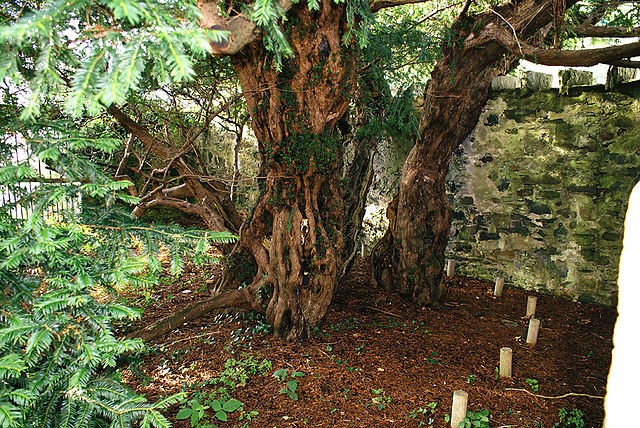Trees can last a thousand years, maybe more, and the Fortingall Yew is no exception to this incredible longevity and what's even more remarkable is this tree can even change its sex through the millenia.
This indigenous Scottish tree is also estimated to be 5,000 years old and is believed to be one of Europe's oldest living organisms. The tree is also undergoing a major change, where it is now transforming its sex from male to female, says botanist Max Coleman who is from the Royal Botanic Garden Edinburgh.
Yew trees are commonly dioecious which means that they are either male or female. Male trees possess small cones and emit pollen clouds during breeding season while the female ones bear fruit of bright red berries.
According to Coleman, it was quite a surprise to discover that three ripe red berries on the Fortingall Yew last month when the rest of the tree was obviously male. Coleman also says that Conifers such as the yew have been observed and documented to change sex however, he says that this is still a rare occurrence.
He adds that tree sex changes usually reveal evidence on a tree's crown or its aboveground parts as opposed to the whole tree. The Fortingall Yew also seems to have a single small branch in the other part of its crown that has now switched and behaves as a female.
According to Ancient Tree Forum chairman Brian Muelaner, the tree could be undergoing these significant changes and transformations as a strategy to further prolong its lifespan as it is located in a small stone enclosure in the Fortingall Churchyard in Fortingall, Perthshire, Scotland.
Muelaner believes that the Fortingall Yew is now fragmented and compartmentalized some parts to become sexually ambiguous. He says that scientists are still learning more about ancient trees and their aging process and this discovery is still considered as new science.
Coleman believes that environmental stress factors could trigger these sex changes but otherwise, the tree appears to be in healthy condition. He adds that there is an apparent shift in the hormonal balance of the tree, causing this sex change.
To date, three seeds from the female part of Fortingall Yew have been harvested and planted at the botanic garden, together with some seeds and cuttings from other ancient trees.




























